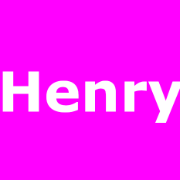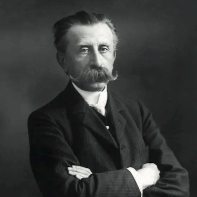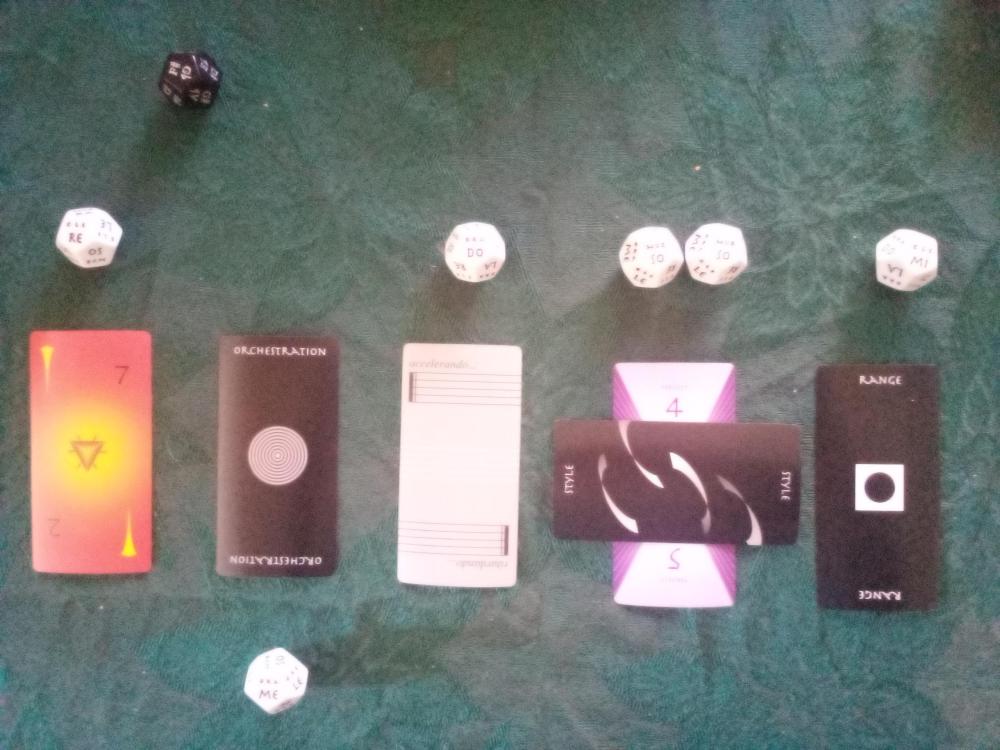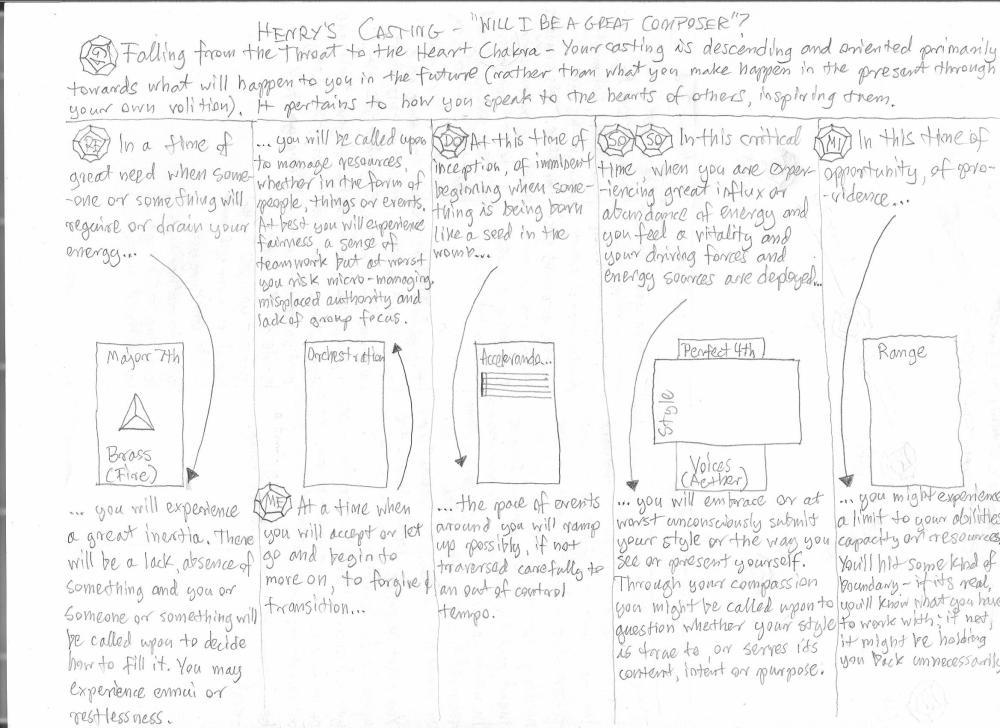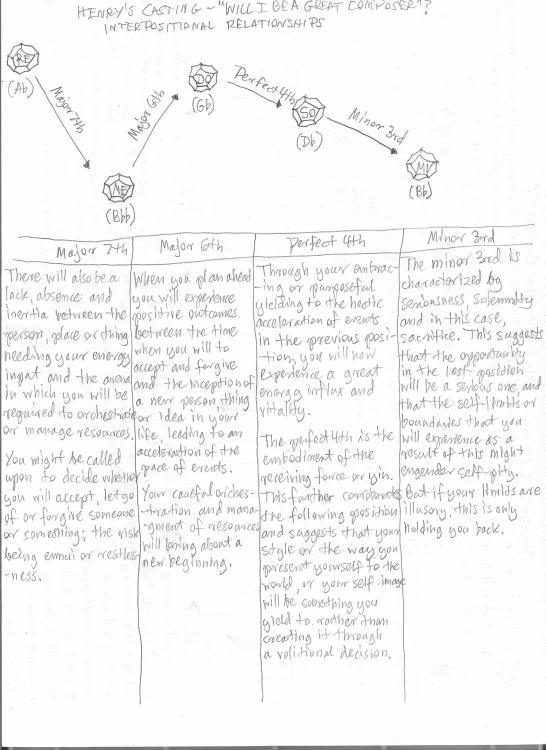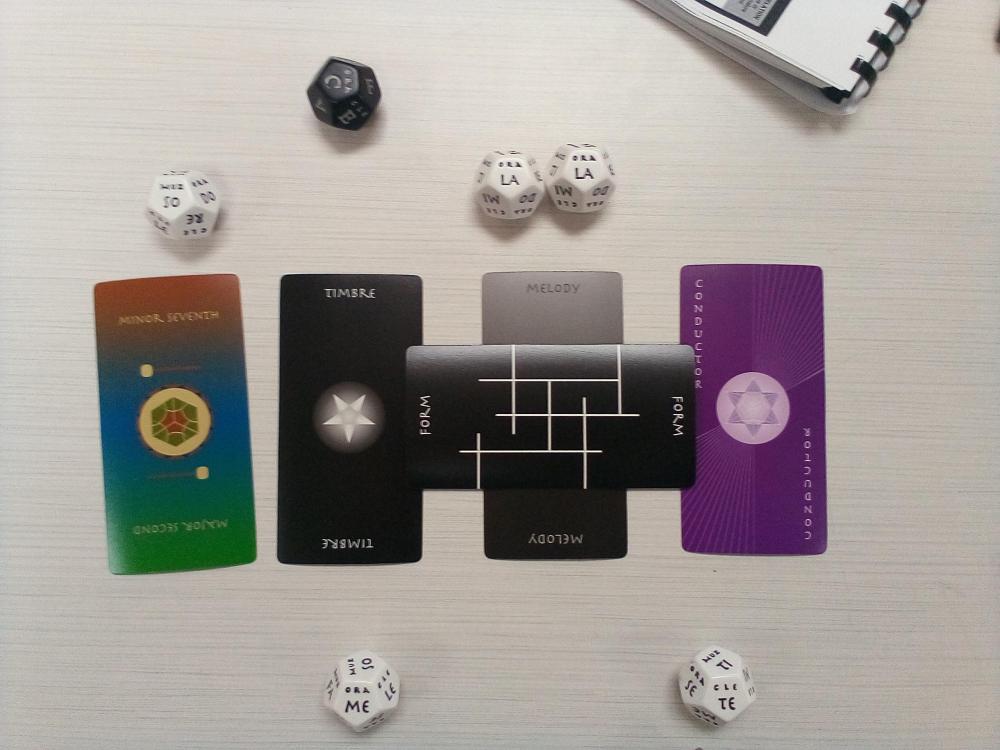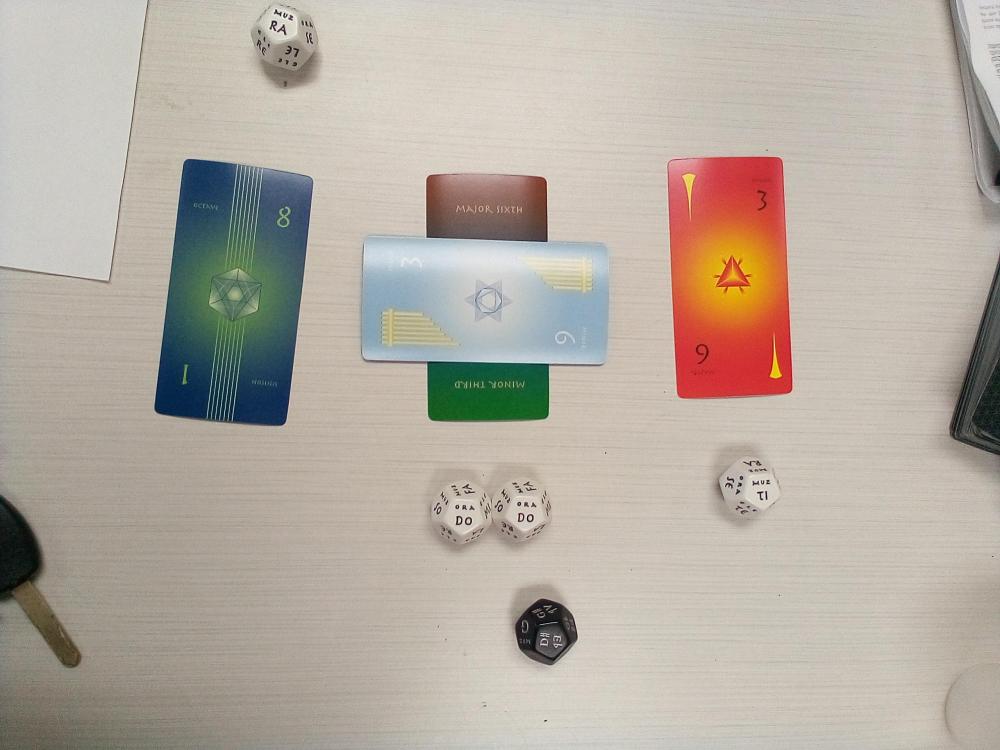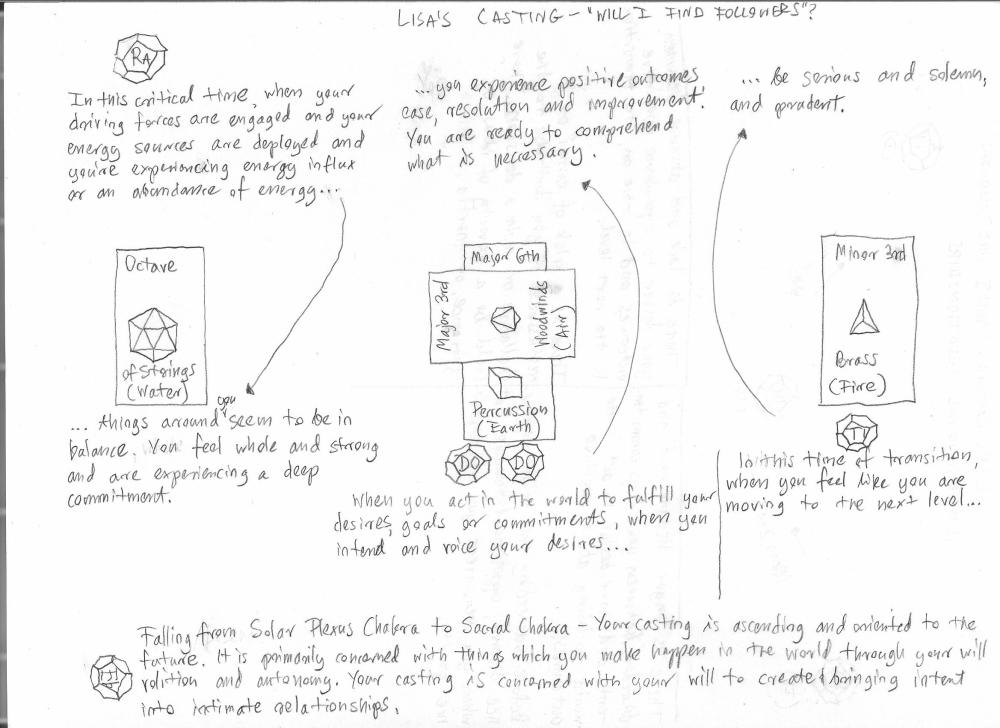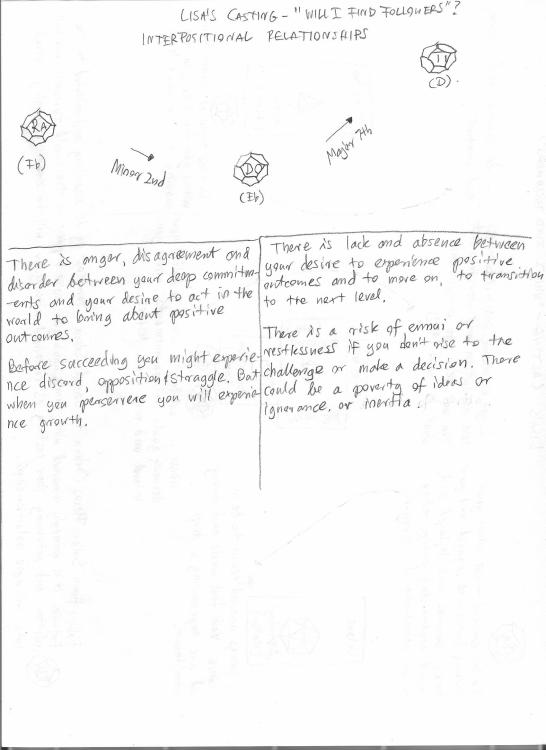Leaderboard
Popular Content
Showing content with the highest reputation since 04/01/2024 in Posts
-
So anyway, the last time I tried to write a symphony was almost 8 years ago, and it was so terrible that it's now called Symphony No. 0 and we never speak of it. I was 15 at the time. I suppose (most) teenagers aren't generally known for writing great symphonies. But I recently tried again. This is now my Symphony No. 1. I just finished it today. It's in one vast, slow through-composed movement. I wonder if, as you listen, it is obvious who my main stylistic influences were. The entire piece is built from one motif, the three-note figure that bookends the whole thing of the rising leap followed by the falling step. I've been working on this for about six months. This symphony was the product of a lot of experimentation and often changing course on the fly. Not only have I never written this much slow music all at once before, but these are the largest orchestral forces I've ever handled, with the greatest variety of orchestral color at my disposal. It's also the first time in a while I have allowed myself the luxury of a harp, as previously I had always been wary of giving myself the opportunity to commit any of a number of common orchestration blunders. I'm enjoying the fruits of the new Muse Sounds I have gained access to by virtue of switching to Musescore. They're wonderful. They can be a bit buggy, but sometimes it's almost scary how human they sound. Curious about how this will be received.3 points
-
Wow, this is so great! You're a gifted writer, and I really love the fact that you took to heart your goal of constructing the entire symphony from the rising then falling motif. Brilliant execution of that. I admit I heard this when you first posted, but something this massive took a while with repeated listens to really figure out what I could even say, or what I even wanted to say haha. This is just bloated with drama, and a great introduction of your symphonic prowess. I've noticed that no matter what I'm writing, part of who I am and what my personal situation is leaks out into the notes. I'm curious how personal this is to you, since it's your first symphony "no.1" (😛)? It sounds so emotional that I'd have a hard time believing it was all puzzle fitting and theory crafting. I really enjoyed the overall arch of the dynamics. Even though it was slow, as you say, it had plenty of motion and variation within it that it wasn't a bother to me. But this kind of crescendo then diminuendo of the dynamics overall throughout it's duration was really cool, and helped make it cohesive as a one movement symphony. The melodies are all superb, it's so rich in emotional depth to me. I love how you're a phenomenal string player, but you didn't make this about the violin. The tossing around of motifs and careful planning of color balance was a treat. I also can't thank you enough for hiding empty staves, it makes it so much easier to read and much more worth a composer peer's time. I love this kind of discussion. THIS is what makes people better at composition. There's no right or wrong here, just opinions from talented people. I agree with Peter in a way. I'm not sure if he meant a literal scherzando, but a change in texture would be advantageous, especially for a one movement symphony. Right at M, I love where you go here. But I think this would have been the perfect spot to build your motif in a faster rhythmic way. I love the heavy drama here, the light-heartedness might not fit. But I found myself continuing to relisten to this spot, where it builds really massively and then ends solemnly. I just kept zoning out, and I think it's because I was so used to the slower texture that my ears wanted a change rhythmically. If this was movement 1 of a multimovement work, I think it's more than fine as is. But as a one-movement symphony, it may have been something to consider deeper, and definitely for future thought. Overall though, this piece of yours hits closer to my heart than you might know, as I'm almost done with a long symphonic work that's slower... and in the same key sig... and nearly as long... But I digress. 😄 Lovely music, wonderfully clean score, and congratulations on completing your first symphony! I've listened to this numerous times now, and can say that I'll reference this when I have my own orchestration or notation questions. Extraordinarily beautiful composition 🙂3 points
-
G'day fellas, Happy belated Easter! I must have composed this tune at least two years ago, but decided to rework it a bit. I'm not overly fond of it, I will admit but believe that it has the most distinctly Australian feel out of everything I have ever written. You might also notice some ragtime influence in it, too. I'm considering writing a middle section as well, and hence making the piece into a ternary form. Yay or nay? Cheers, Quinn Humoresque No 1.mid3 points
-
Hi! @arpeggia. I really enjoyed this piece too! the chromaticism, dissonance, the use of accents which makes it sound as if the strong and weak beats subverts what is typical of a waltz, yet still stay consistent enough to be easily recognizable as a waltz, which makes it a very interesting and engaging! A lot of drama within a short span of around one and a half minutes. Well Done! I agree with @PeterthePapercomPoser that would be a good extension if you want, a middle, contrasting part to what already is there. Thks for sharing!2 points
-
Hello @arpeggia! I really like this piece! To me, I don't see a problem with the title as I think it really fits the pathos of the piece - I would also describe it as perhaps "demented". I think for a piece with only one main section it still manages to stay interesting and create contrast with changes in dynamics and how you subdivide the beat. If you ever think of extending the piece I think it could work as an ABA form with the B section as maybe a slower and more eerie waltz in another key. I can definitely imagine that. Thanks for sharing this really enjoyable demented dance!2 points
-
Took me long enough to share this with you... the timing is also quite good if you consider some of my explanations I guess 01 hw1.mp3 Introduction Context Primer for the music itself Sorry for the walls of text lol, if you prefer just let the music speak for itself it is also fine.2 points
-
Alright, let's get this out of the way. Why would anyone copy you over Rachmaninoff (which they can for free)? Or Mozart (which they can for free), or Beethoven (which they can for free), or... you get my point? Why the annoying diarrheic PCC over the score? Can't you just put your name as a copyright at the bottom of every page? Even if you want to keep your anonymousness, can't you still do that while saying PCC at the bottom? And if you're that paranoid, post it on Youtube or another platform that won't go under in the near future. Once you post online, your piece is copyrighted. And if you're STILL paranoid, why bother posting a score in the first place??? If you said, "hey, I don't feel comfortable posting the score online", no one would fault you. ANYWAY, I agree with our dear beloved friend Henry. Although, I like your more unique approach to the form, and I think it works. One of my favorite things to do musically is to take a form and expand or revise it in some way. Your piece isn't the "typical" sonata form, but you do a lot of cool, almost improvisatory things in the exposition and other moments that in my eyes make the form more of a guideline rather than a concrete formula. Very cool. I listened to this a few times (mostly without the score 😛), and the repeat was crucial to me. It helped create a picture of the form when I would get lost. Very nice. Just when I thought I was getting lost, and even if the themes felt disjointed in difficulty and material, the repeat made it all work, and helped me know where you were once I heard it. Disjointed material can work together, but maybe in the future I would continue to explore ways to make it bond more seamlessly. For instance, your tempo is very rubato throughout, and if you had more sections where we could feel even something as small as a constant rhythmic pulse could do wonders in making your sections more cohesive. You seem to have a flair for the drama, and those moments were my favorite. All in all, very unique to my ears, and a wonderful performance. I love all of the emotion you pour into this; I can feel it with your playing. Your music is thoughtful and evocative, and I'm excited to continue listening to your playing/music. Well done 🙂2 points
-
Hello @Olof Darin! Welcome to the forum! I am listening with headphones as instructed. I actually think this is quite lovely with some unease and discomfort inherent in the slightly dissonant language you employ. But I think this proceeds quite logically and melodiously throughout! You might get even more attention from fellow pianists on this forum who have also played their own sonatas like you have such as @PCC and @Henry Ng Tsz Kiu, if you posted a score. Your playing is very good, especially in the fast parts! I don't think I've heard any obvious mistakes. I think I like the soft, chorale-like parts of this movement the best. The bell-like effect you achieve through your use of octaves in the extremes of the piano register is also quite creative! Thanks for sharing and good job!2 points
-
As the poster above me asked: How well do you know your theory and the craft of composition? If it is simply that you're feeling stumped, or struggling to get it to sound how you want, then this is usually the source. I would also recommend you get a MIDI controller to input notes into Musescore that way if you don't already. It would be painfully slow trying to input it with mouse and keyboard. Your piano trio may go faster if you use a DAW and kontakt libraries instead of musescore. Then, you can just record your piece in real time, and with pianos, you don't have to worry about keyswitches and other MIDI annoyances. Honestly, it really isn't. Especially if your goal is concert/neo-classical stuff. It is better to put out 5 pieces per year that are amazing, then to release 10 middling ones just because you feel you have to hit a certain number. Even from the most iconic composers, only a handful of their pieces are really well known to the masses. In many cases, the composer spent anywhere from weeks to years writing them. Even bands, who typically are doing way simpler music than classical; each new album is a result of 1-2 years (or more) of songwriting and selecting the best ones for the album. Back in the days of record deals, labels would demand an album of X number of songs within a short time-frame, which is partly why "Girls, Girls Girls" is the only decent song on that album. Also, remember that Carl Douglas's only song of note was 'Kung Fu Fighting' 50 years ago and he wound up with a net worth of 5 million. In other words, if no one is breathing down your neck to get this done and paying you to do so, take all the time you need. Lastly, since you say you're in school it's safe to assume you're pretty young: Know that the field of professional orchestral and neo-classical music is not a pursuit for low-time preference individuals; it is mainly an old man's game. I lucked out when I was 18, and got my first professional job, but that is an extreme rarity. Most guys don't see any success (financially or otherwise) until they have DECADES of experience under their belts. So aside from the aforementioned advice, I'd say: Take your time, and just keep chipping away at your pieces. Even 1 bar a day is progress. Because as the saying goes:2 points
-
Hi @PeterthePapercomPoser and @Hcab5861! I've modelled the overall texture and soundscape off of the bass aria of BWV 159 (which is imo the most beautiful aria Bach has ever written). The omission of a harpsichord continuo and the strings "harmonic halo" are both completely intentional - I want the mood of the music to be gentle, warm, embracing. In addition, I'm a little bit torn on Da Capo form. I think it works well in duets but by default I tend to avoid it. From a singer point of view I don't get excited about singing the first part of the piece exactly twice, and from a compositional point of view, your ritornello theme better be REALLY good to warrant a minimum of four exact repetitions (but more typically six to eight repetitions including fragments), at least for those themes that are tonally closed. I much prefer the scheme of ABA' in these cases (e.g. see the alto aria in BWV 197), where A ends in the dominant and A' ends in the tonic.2 points
-
Hey all! I just completed what was for me a massive project, Three Scenes for Ensemble is a set of chamber pieces (one of my first compositions) which I composed and recorded at the legendary Hansa Studios in Berlin. I felt this would be a great place to get some feedback. I know it's a ton of music, but it would be incredibly helpful to even if focus on one measure to show an example of different choices I could have made orchestration-wise, harmonically, notation-wise, etc... Thank you in advance and I hope you enjoy! If you would like to support please consider also listening on Spotify. Score Video: About the Music! Credits: Composer: Nicholas Schuman, Flute: Thomas Hahn, Oboe: Anna Schulkowski, Clarinet: Constance Morvan, French Horn: Melinda Gál, Piano: Daniel Zhao, Cello: Josiah Simonds, Sound Engineer: Arne Bergner, Assistant Engineer: Marian Hafenstein2 points
-
Hot dang boy are you lucky. You got a review from @Henry Ng Tsz Kiu. Man, just typing @H pulls up Henry first. He's our forums most illustrious member, and anything he says is Chinese wisdom we all learn from. Sorry, I'm an unsuccessful clown with a guitar. 🤔 This was great! And wow, for your first piece, you have a studio performance? Wow, holy opportunity! I hope you asked them every question in the book, because the more you know of their instruments, the better you'll compose for them. Do they work with your school? What's it like to study abroad and record in Berlin? It sounds like you have an incredibly interesting story to tell 🙂 I agree with Henry with the score being rife with labeling and coloring. It's cool to see your analysis, and there is an audience for that. It shows you care enough to explain in further details questions listeners might have, or that you know your stuff. But I'd post a version of just the score too; I bet it would get more views than the analysis version 😉 Your music is lovely, and for your first composition, this shows a lot of promise. I like that your background is film scoring and the like. It'll help shape your voice, because it's your inspiration. But I really encourage you to study up on the great composers. Watch Youtube for hours of the score videos. It's free, bruh. Look up Romantic-era composers first; it seems to suit the style of the film people. But let it lead you to others. Study scores of Chopin and Beethoven (and WOW, many more!) if you're writing for piano. A lot of your parts are elementary and conservative, especially in solo moments. Guess what, that's ok! You made it work, you went through the recording process, the whole shebang. You COMPLETED your project, and you followed through. That's what it takes to make it in my eyes, to see it through to the end. Congrats 🙂 My advice, like I said, is to keep studying up on the instruments. I forget... do you play an instrument? It would be greatly beneficial to you to continue to explore one instrument in it's full capacity and to write for it in tandem with your school studies and projects. I'm a guitarist, and my knowledge gained of the instrument always leads me to perpetual new ideas about what other instruments might be able to achieve. You seem like you have a lot to offer the musical world, and hopefully the forum here. There are loads of talented people here to learn from, and their advice is free. And if you want piano pieces performed, Henry Ng charges $1,000,000 USD for a complete full album. It's worth it Oh yeah, welcome 😄2 points
-
This dialog is pretty much correct I think. There's a difference between writing something abstract and writing something unidiomatic and needlessly difficult. Hiding behind supposed goals of abstraction and complexity to excuse bad writing is not an easily definable thing, but like pornography according to the Supreme Court, "you know it when you see it" if you are a relatively experienced composer. My use of harp is very sparing, but that's roughly in line with how it should be used. As Thomas Goss (of OrchestrationOnline) says: decoration, filigree, support. The harp is like dessert, adding great delicacy to a thin texture but rapidly becoming stale if overused. Every orchestration challenge he issues stipulates NO HARP CONCERTOS for a reason: beginner composers see the double staff and get overexcited about what they (think they) can give the harpist, and wildly overestimate the instrument's real capabilities. At the end of the day the harpist has an ungodly difficult part that just gets drowned or forgotten in the texture. Let the harp do what it does best. The harpist won't mind if they have to sit and count some rests any more than my poor trumpet players will. They're paid to do that, so to speak. Notice that some of the most idiomatic harp writing I employ comes in the come una danza sections where I use glissandi and rolled chords - two extremely common and standard harp techniques to just add some background lush flavor to the texture. The exact notes played, insofar as they make the right chords, aren't important. The most I have the harpist do in a foreground role throughout the entire piece is that little dainty rising scale in the reprise of the danza. Again, decoration, filigree, support. To the other point, this work is actually not drawing on minimalism at all. The glacial note values are an emotional expression tool, not an attempt to simplify or pare anything down. My contrapuntal lines are actually fairly intricate a lot of the time even when the note values are long and the textures are thin.2 points
-
Hi @Quinn St. Mark, Me like Vince don’t know the difference between them! I have never heard the term Saltarello LoL !! Watching this I think they are literally the same thing?? I really enjoy those complex chord progression! By the way, why don’t you write the piece in 12/8 so that you can cancel out all those triplets? I think those octaves in b.15 onwards can be really difficult to play! I mean even Brahms Piano Sonata or Chopin Scherzo no.3 are around the same or even slower tempo! I think like Vince said, you can develop a bit further first before having those virtuosic passages! Thx for sharing, it does look promising! Henry2 points
-
Greetings! I am back with yet another Muzoracle casting - this time of our very own @Henry Ng Tsz Kiu!!! (Muzoracle is a storytelling/divination tool similar to the Tarot card deck, but with cards with musical concepts and 12-sided Musician's dice and Solfege dice.) This time, Henry asked the Muzoracle "Will I become a great composer": My interpretation of the cards and dice are displayed below. This time I used brass and voices since the Major 7th card at left is in the suit of brass and the Perfect 4th card, underneath the Style card is in the suit of voices. If you'd like to find out more about Muzoracle and how castings are interpreted go here: https://muzoracle.com/ These interpretations I'm making seem to be getting more and more elaborate, while the musical pieces they yield seem to be getting shorter and shorter! 🤣 This piece is only a few seconds long but it is an accurate aural representation of the casting which is the main purpose of the music. But, if you have any suggestions for how I can extend these pieces while still staying true to the casting please let me know! This time the black Musician's die landed on Gb and the casting is descending, which means that the diatonic solfege dice that land on their respective degrees will descend to the next degree, while the chromatic solfege dice will ascend up to the next degree. So, the dice landed on Re (Ab), Me (Bbb), Do (Gb), So (Db), and Mi (Bb). These are the tones used in the composition. The direction of the melody is shown by the arrows on each page, and they also lead the reader from the preceding to the concluding statements in the casting. I just tried to find a way to symbolize the variety of different brasses playing at different times coming together at the end because of the orchestration card. And I added the voices since there's a voices card and accelerated to the climax since there's an accelerando card. Thanks for reading and I hope you enjoy listening to this short musical idea/aural representation of Henry's casting! Any comments are welcome.2 points
-
I originally wrote the beginnings of a scherzando section that was going to appear at M, but I eventually scrapped it and put in what is there now. So it's definitely a thought I had, but I rejected it. I didn't think it fit. It broke the dramatic arc for me. I don't know very much of the oeuvre of either Bruckner or Sibelius, though I've started trying to explore Bruckner more recently and I am at least consciously aware that at times his influence did start to make itself felt as I got into the middle and end of the symphony. However, a much nearer and dearer inspiration to me is Mahler, and Tchaikovsky was on my mind heavily when composing the dance-like sections, despite me not really being aware of any specific piece by him that has those characteristics. I wasn't aiming to emulate any particular person though, so I could very well have created a hybrid style.2 points
-
Hello! I've recently gotten a bit into the art of Muzoracle - a storytelling/divination tool similar to the Tarot card deck, but with cards with musical concepts and 12-sided Musician's dice and Solfege dice. I did a casting of a friend named Bradley - he asked the Muzoracle if he would ever gain "fame and fortune": My interpretation of the cards and dice are attached in a pdf if you care to get into it. I decided to compose a short piece to represent the casting using pitched percussion (since the Minor 7th card at the left is in the suit of Percussion) and choir (since the Conductor card on the right is in the suit of Voices). If you'd like to find out more about Muzoracle and how castings are interpreted go here: https://muzoracle.com/ The piece isn't meant to be long or showy - it's in the key of C since that is how the 12-sided Musician's Die up top landed and uses the scale degrees of So, Me, La and Te (G, Eb, A, Bb). The casting as a whole is a descending one which means that the default direction of the diatonic scale degrees is to fall to the next rolled solfege die. However, if a solfege die lands on a chromatic scale degree it goes in opposition to the predominant direction of the casting (in this case - ascending). So the melody of the casting is G falling to Eb, rising to A, and falling to Bb, which is the melody you will hear in the music. If you've gotten this far - thanks for reading and I hope you enjoy listening to the short piece! Any comments, critiques, suggestions or even questions (if you're curious about the Muzoracle) are welcome!2 points
-
The thought of you in HK rotating your iPad around with possibly other distractions playing in the corner of the screen (like basketball haha) trying to read Peter's handwriting made me literally laugh out loud. You're the best Henry, I hope you win the lotto or something2 points
-
Yo Peter, My complain is also it’s too short. The beginning really reminds me of Gamelan music! I really hope that interlocking pattern keeps going and going! I think this one is actually a great idea LoL! Or even some aleatory music! Peter is showing his real colour here (from an MBTI perspective)!! Like me I would NEVER write such a detailed description on how to write my music logically since I usually just have a big picture never these details and with zero logic LoL!! And me find myself dumb too to rotate the images when my iPad I am holding now keeps rotating my rotations and I can never find the right way to read Famous PeterPapercomPoser’s Paper…. Nice sharing Peter! Henry2 points
-
As you may have guessed from the title. I've been doing little exercises with different melodic ideas and the likes. I wrote out this little piece to convey Lusciousness.2 points
-
A 'modernish' work for Guitar, clarinet, flugelhorn, violin, cello and double bass. In the eventual version the guitar will be electric. The last 5 or 6 seconds on the audio are silence in case I had to load it to soundcloud. I hope to write a small suite of pieces for this or similar ensemble, this being the first. If I gave it a title it would be "Into Spring, then" or similar. Any comment good or bad would be most appreciated and many thanks if you give it a listen. All the best....1 point
-
Hey all! Sorry I've been gone for a bit...life was very busy. But here's a little piece I started this morning in FL Studio. The idea for the main recurring motif popped into my head and I had free time, so...I went to work! In this specific project I used my usuals, BBCSO Discover, Intimate Strings, Epic Choirs...but also Amadeus Symphonic for the brass this time around. I took the feedback I've gained here of varying my works and making them more engaging...hoping this one is doing that so far! (I've only had a couple hours at it so far). One thing I tried in this was to add a little variation on the main theme in there, which was fun. In my mind this song, or the main theme at least, represents a wide open unknown...and that within it that is "Beyond Our Sight". Hence the title. But as always, I'd love to know what imagery this brings about for you! Looking forward to your feedback and compositions and hope you enjoy the listen!1 point
-
Here is a Minuet, which I recently composed. Apart from a classical style, there are also some elements of Nordic folk music. I would be very interested to find out what you think of it.1 point
-
I wrote this air last week for an orchestral suite I've been working on. I can't quite decide whether it's too schmaltzy or not.1 point
-
So I listened to the piece and the answer is what... no? 😛1 point
-
Hey @Quinn St. Mark, It’s definitely humorous and light hearted music! I love those glissandos and funny chords, plus the fleeing rhythms. Definitely a yay. But before that I feel this section alone can be developed for at least twice longer! Like this section alone it can be a small ABA with the middle B section in F major or some close keys, and then the middle section can be in Gb major in a contrasting mood which is less lighthearted for example. I think of the piece named “The Fountain” by Carl Bohm when I learn piano as a young teen and I think you can have that piece’s structure! Thx for sharing! Henry1 point
-
Hello! I am back with yet another Muzoracle casting. (Muzoracle is a storytelling/divination tool similar to the Tarot card deck, but with cards with musical concepts and 12-sided Musician's dice and Solfege dice.) This time, my friend Lisa asked the Muzoracle if she would find followers for the new music notation system that she is developing: My interpretation of the cards and dice are displayed below. This time I composed a piece including strings, percussion, woodwinds and brass (since the octave card at left is in the suit of strings, the cards in the middle are the axis and the major 6th card underneath is in the suit of percussion, while the card on top laid sideways is a major 3rd card in the suit of woodwinds. Finally, the card on the right is a minor 3rd card in the suit of brass.) If you'd like to find out more about Muzoracle and how castings are interpreted go here: https://muzoracle.com/ This is a short piece meant to represent the casting aurally. The piece is in Eb since that is how the black 12-tone Musician's die landed (displayed at the bottom of the casting). The piece starts on the scale degree of Ra descending to Do (Fb descending to Eb), followed by a leap up to Ti (D). I let the cards decide which instruments play what and the intervals displayed on the cards determine what kind of harmony would sound above each Solfege die. If you've gotten this far thanks for reading, and I hope you enjoy listening to this short orchestral representation of Lisa's query. Comments are of course, always welcome.1 point
-
Yo @PeterthePapercomPoser, I wouldn’t wanna write a description this long for a 37 second music!! My complain is the same as @Quinn: it’s too short!! So can your friend Lisa find followers?? It sounds like the outcome is not so good since it’s in c minor… (Me just trolling……) I think your composition style is already succinct! Thx for sharing your creative method to compose Peter! Henry1 point
-
Hey @Aiwendil, I don’t find it schmaltzy at all! I find this very enjoyable. In b.44 I think you would go as far as G sharp minor but instead turn back to D major but switching to G minor! That’s unexpected for me. Even it’s an air I want sometimes the strings can play the theme! It would be very beautiful if the violin plays an octave higher for the theme. Thx for sharing! Henry1 point
-
Hello dear folks. This is an attempt at the 3 handed piano effect. Any feedback would be awesome especially regarding how well the piece developed and the form of the piece so far. Thank you very much. Best regards. Bjarke. 3 hand concert piece effect - Flow 1.mp31 point
-
Hey @PCC, Actually it takes me more effort to read with those ridiculously huge “PCC” watermark than those tenor clefs LoL….. I feel like the movement is repeated. Where is the repeated sign? It’s hard to listen while following the score since it’s not the score you are playing LoL! I think you are really ambitious here. The motivic treatment and the theme are very like Liszt here. Many passages are living in the moment with the images you are depicting, like the crucifixion and crosses. I am treating the movement more like a romantic character piece than a sonata form regulated one since the momentary imagery is important than the structure here. Maybe for me there are too many motives here to be recognised so I don’t recognise any of them at all LoL! I don’t the piece with the paradigm of sonata form in my head but instead with momentary climaxes, and I don’t think it’s a bad thing. I like your playing of your own piece! (Btw I enjoy your hiccup between somewhere LoL!) Thx for sharing! I will take my time to go through the rest of the piece. Henry1 point
-
I had a solid idea of what I wanted to do by the beginning of the piece, but it started falling off so I had to wrap things up---something I have to deal with as usual. Any tips on expanding on a theme? I do wish I could've made the piece a bit longer and more expressive.1 point
-
Most interesting. The only unenjoyable thing about it was it's too short (but I acknowledge you had to follow the precepts). It comes across succinct and clear (as in uncluttered - something I should learn from). Very nice. Also particularly interesting that you mention the parallel to the Tarot. .1 point
-
Agree with what's already said, inspired by the late romantics. Slightly reminiscent in mood (to me) of the second movement of Elgar's Symphony No. 2. Indeed a beautiful piece, the harmonic rhythm always changing but still managed to end in E minor. It seemed less luscious than disconsolate but highly expressive all the same. A most pleasant listen. .1 point
-
Very cool, very beautiful. It's dark and sorrowful, and as Luis mentioned much in the likeness of the late romantics. I really like whenever someone posts a study or exercise for something. It's helping you learn and grow, and inadvertently there are loads of people who are learning from your music posted here. Do you plan to do a set of these? Are you exploring strings currently? It'd be cool for you to keep this going, with each small piece you write practicing a technique or whatever of something you feel is on the weaker side. Also, keep posting mate. The more you post and become involved in the community, the more feedback you're likely to receive.1 point
-
Your second statement is somewhat shocking to me, but it fully explains why you believe the first statement is true. I only ever listen to a symphony in its entirety, and I enjoy that kind of long-form music. And that's also why I write long-form music - I'm not just copying older forms for the hell of it; I'm writing the kind of piece I would want to sit down and listen to. Of course, I'm not an "aspring composer"; I'm just a hobbyist, a dilettante.1 point
-
A very beautiful piece of work. I think inspired by the late romantics.1 point
-
This is very good, I like it. But it is a bit too short. You should definitely expand it (An ABA format could be suitable).1 point
-
Very fun music! A lyrical middle section would be cool, but I would continue to develop what you have and flesh out this main material. Looking forward to the updates, keep writing 😄1 point
-
1 point
-
Hey there Peter This is a pretty cool concept. Although definitely not my preferred listening, I really appreciate the leaps you take with your inspiration. Just when I think you'll post another theme and variations, you take the theme and variations to the extreme with your curiosity for the sources of inspiration. Your theme came from the most varied source, randomness itself, and your craftsmanship as a composer helped bring this to life. Copying your handwritten notes is ok, it actually shows us more of your character with your handwriting. But it's very hard to read, and I'm too dumb to figure out how to rotate your images. What about MS Paint? Or if you don't need the arrows and circles, what about typing it out? I honestly prefer to see your handwriting, but it's hard to read the copied image. I admire your intellectual nature, and only hope my brash Neanderthal mind can continue to learn from your endeavors. It's a cool study, but do you have any plans with it? Or was it just a fun checkmark for you as a composer? Are a suite of short prophetic orchestral pieces for a group of friends planned for the future? 😄 [Maybe some could be YC folk (start with Henry lol)]1 point
-
1 point
-
Many thanks indeed for listening, looking at the score and commenting. Most appreciated. I’ll rightly apologise about the score. To be honest it may be worth a topic in the “Headquarters”: Should a score be submitted or not…? When working from paper through a DAW to an engraving, it's the engraving that takes masses of time. Far easier for those composing into notation software which is integral to the act of composing. Not so, the way I work. Engraving can take anything up to 20 times as long as composing. All the dynamics and instructions have to be added plus dealing with midi interpretation errors. E.g., the software isn’t always clever – particularly with things like tuplets (that are declared as such in the daw). Worse that the software can’t handle voice changing with tuplets. The new voice is all over the place and throws the rest of a phrase out of step, so the only remedy is delete the phrase and re-input it note by note. Just one of several problems that I find so frustrating hence the sarky remarks! It’s not a score I’d submit to professionals! As for the cello, it’s the standard VSL solo cello about which I can do little except perhaps take more care with the rendering. I think your comments are indeed valid and appreciated (it's why I've posted no "major" work of late). I’m only too aware of repeating myself across new work hence trying to develop a new direction which means toward more abstract form (that still presents some meaning within reach of a listener other than me)! These smaller works were a break from a near ‘giving up’ through frustration. I suppose it’s the nature of semi-atonal music (or modern music that hangs between tonal and atonal) to sound uncertain and/or uneasy – but at least that hints at it saying something: it doesn’t come across as just a mass of random sounds. But it’s too easy to get in a rut. Hopefully my latest work is less uneasy, a brighter inspiration and one that will come with a decent score. It’ll probably take another month to get it in shape. Again, thank you.1 point
-
The finale of Tchaikovsky's String Quartet No. 3, Op. 30 in E-flat minor1 point
-
Hi, Nazariy! Very elegant. 5:02 was an interesting section; so much motion and character. And I really like the illustration you used in the video.1 point
-
This track from The Batman Returns features high string glissandi that sound very cat-like: Selina Transforms (Pt. II)1 point
-
1 point
-
Another favorite of mine - gotta love those John Williams' polychords in "Fawkes the Phoenix" from Harry Potter and the Chamber of Secrets:1 point
-
Quite possibly - although Lutoslawski has his fine moments to be fair. I seriously believe I can never get tired of Tchaikovsky - but honestly I have to switch from one piece to another, and perhaps find something I haven't heard before from him (don't take me back to 1812!)1 point
-
Ooh...an eclectic selection, Mitchell! I'll have to look most of those up, but... Have Poland, will travel! Poland's anthem is one of my BIG TIME favourites. I cannot hear it without weeping. For those not familiar with it, it's known as The Dabrowski Mazurka. That's right: Poland's national anthem is also one of it's national dances - one of the few I know of that is such - and it's a grand one, with really stirring, historic lyrics about Poland's struggle for freedom and national identity. Composed in 1797, it is named for Jan Henryk Dabrowski (1755-1818), a Polish general who, after the Third Partition of Poland, organised a legion of Polish exiles in Italy to fight in the Napoleonic Wars. Here's my favourite recording of it: An English translation of the stirring lyrics: Poland has not perished yet So long as we still live! What foreign force has taken from us We shall take back with the sword. REFRAIN: March, march, Dąbrowski From Italy to Poland! Under thy command Let us now rejoin the nation! Cross the Vistula and Warta, And Poles we shall be. We've been shown by Bonaparte Ways to victory. (REFRAIN) Like Czarniecki to Poznań After Swedish occupation, To rescue our homeland We shall return by sea. (REFRAIN) Father, in tears, Says to his Basia, "Just listen! it seems that our people Are beating the drums!" (REFRAIN) In light of Poland's centuries of suffering at the hands of mighty enemies on all sides, and particularly after the horrors she endured during World War II and the privation and stagnation of the Cold War, these words take on altogether greater and emotional significance. In proud defiance and against all odds, Poland has emerged from the ashes of its past and moves toward a brighter future, more prosperous than ever!1 point

.thumb.png.8b5b433a341551e913a34392660bc95b.png)

